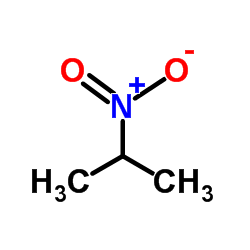Oxidative stress alters base excision repair pathway and increases apoptotic response in apurinic/apyrimidinic endonuclease 1/redox factor-1 haploinsufficient mice.
Archana Unnikrishnan, Julian J Raffoul, Hiral V Patel, Thomas M Prychitko, Njwen Anyangwe, Lisiane B Meira, Errol C Friedberg, Diane C Cabelof, Ahmad R Heydari
文献索引:Free Radic. Biol. Med. 46(11) , 1488-99, (2009)
全文:HTML全文
摘要
Apurinic/apyrimidinic endonuclease 1/redox factor-1 (APE1/Ref-1) is the redox regulator of multiple stress-inducible transcription factors, such as NF-kappaB, and the major 5'-endonuclease in base excision repair (BER). We utilized mice containing a heterozygous gene-targeted deletion of APE1/Ref-1 (Apex(+/-)) to determine the impact of APE1/Ref-1 haploinsufficiency on the processing of oxidative DNA damage induced by 2-nitropropane (2-NP) in the liver tissue of mice. APE1/Ref-1 haploinsufficiency results in a significant decline in NF-kappaB DNA-binding activity in response to oxidative stress in liver. In addition, loss of APE1/Ref-1 increases the apoptotic response to oxidative stress, in which significant increases in GADD45g expression, p53 protein stability, and caspase activity are observed. Oxidative stress displays a differential impact on monofunctional (UNG) and bifunctional (OGG1) DNA glycosylase-initiated BER in the liver of Apex(+/-) mice. APE1/Ref-1 haploinsufficiency results in a significant decline in the repair of oxidized bases (e.g., 8-OHdG), whereas removal of uracil is increased in liver nuclear extracts of mice using an in vitro BER assay. Apex(+/-) mice exposed to 2-NP displayed a significant decline in 3'-OH-containing single-strand breaks and an increase in aldehydic lesions in their liver DNA, suggesting an accumulation of repair intermediates of failed bifunctional DNA glycosylase-initiated BER.
相关化合物
| 结构式 | 名称/CAS号 | 分子式 | 全部文献 |
|---|---|---|---|
 |
2-硝基丙烷
CAS:79-46-9 |
C3H7NO2 |
|
Affinity chromatographic selection of carbonylated proteins ...
2005-04-15 [Anal. Chem. 77(8) , 2386-92, (2005)] |
|
Formaldehyde-releasers in cosmetics: relationship to formald...
2010-01-01 [Contact Dermatitis 62(1) , 18-31, (2010)] |
|
Evaluation of carcinogenic responses in the Eker rat followi...
2002-01-01 [Toxicol. Pathol. 30(5) , 559-64, (2002)] |
|
Ultraviolet photodissociation dynamics of the n-propyl and i...
2015-06-14 [J. Chem. Phys. 142 , 224306, (2015)] |
|
Age-related loss of the DNA repair response following exposu...
2006-05-01 [J. Gerontol. A. Biol. Sci. Med. Sci. 61(5) , 427-34, (2006)] |